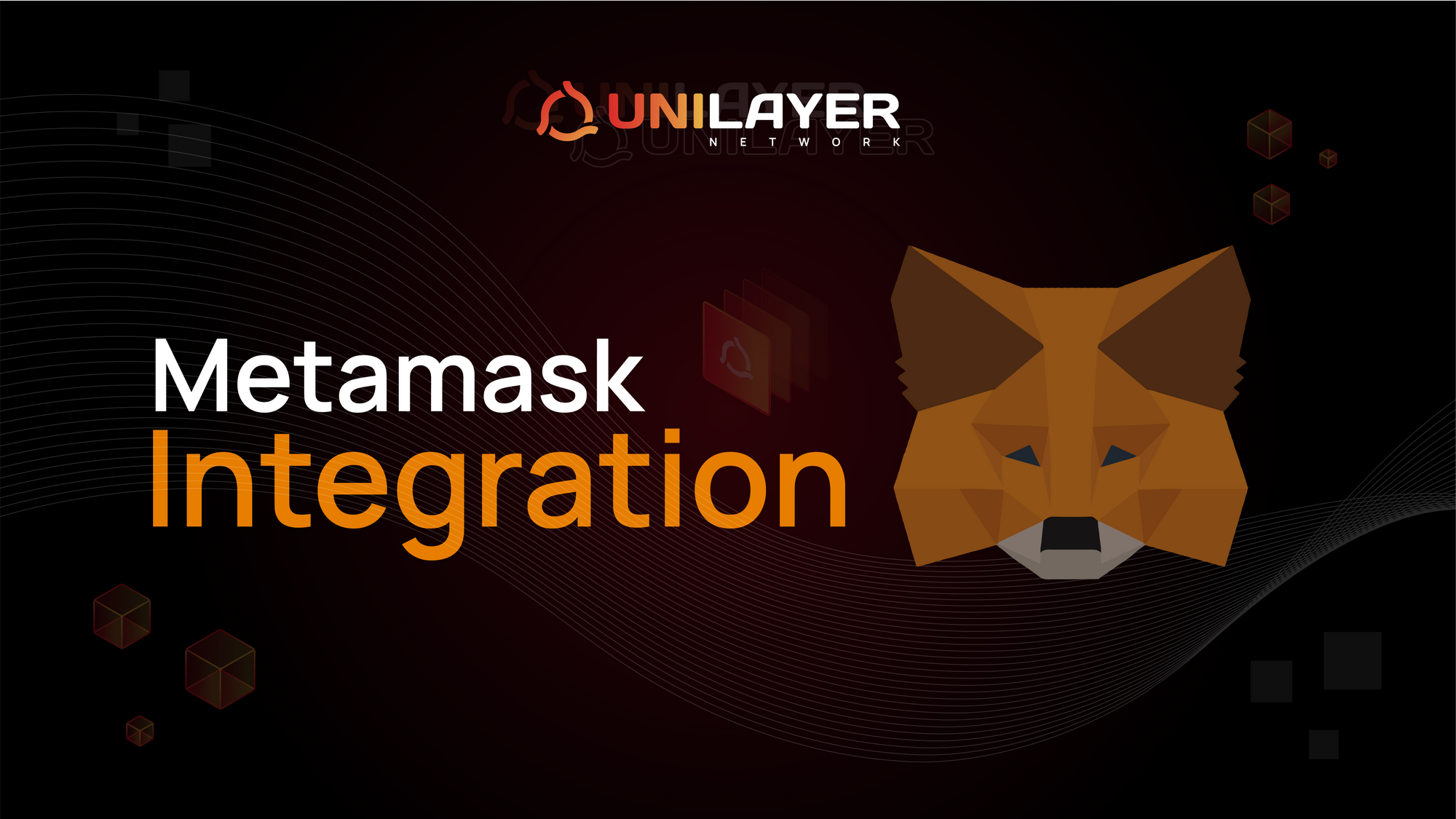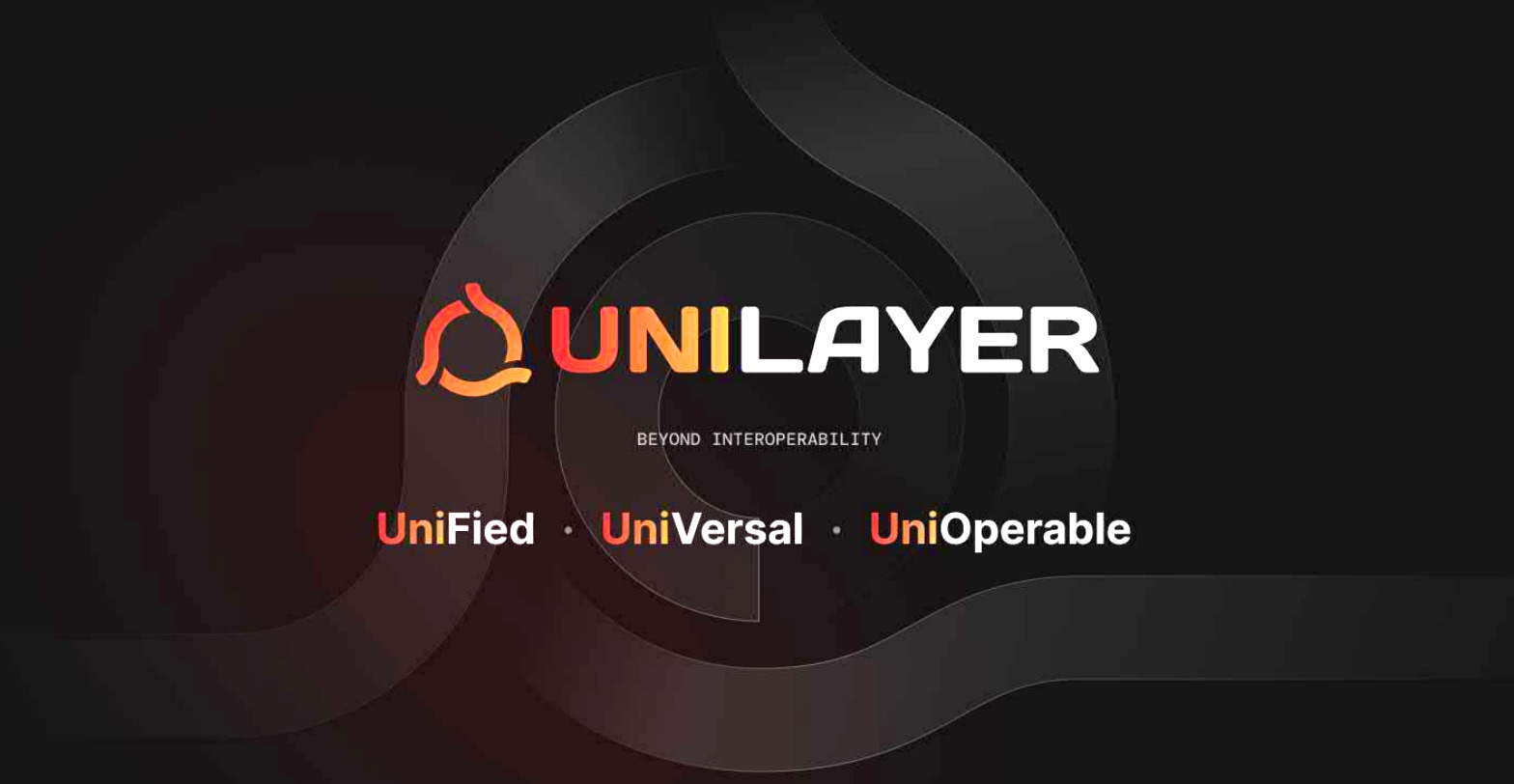UniLayer Completes Groundbreaking MetaMask Integration Ahead of Bitcoin Integration

UniLayer is proud to announce the completion of its landmark MetaMask integration. With the integration, UniLayer has broken new ground; until now, no “Bitcoin-family” chain had successfully integrated with MetaMask; in fact, MetaMask has only supported Ethereum and ERC-20 tokens up until this point, as the platform was specifically designed to operate with Ethereum’s account-based system.
However, now, UniLayer, a network with a completely different system structure - UTXO (first pioneered by Bitcoin) - can access and utilize MetaMask. This is an important stepping stone toward widespread adoption of UniLayer’s layer-1 interoperable network. It also sets the stage for any “Bitcoin-family” (UTXO-based) cryptocurrency to integrate with MetaMask through UniLayer, which will unleash the cross-chain potential of the legacy blockchains. With continued development, UniLayer will soon support cross-chain liquidity pools, interoperable DApps and platforms, and a universally connected blockchain ecosystem that will propel mass adoption.
Today, MetaMask, and other self-custodial ERC-20 wallets, constitute a vital part of the blockchain space, allowing users to access the most popular DEXs, DeFi protocols, gaming and metaverse platforms. UniLayer now has potential to interact with these DApps as well, the realization of which would spark a revolution in on-chain interoperability. Each blockchain network (Bitcoin, Ethereum, Near, etc.) added to the UniLayer network will share in seamless access to DApp integrations.
Currently, UniLayer’s testnet allows ULR tokens to be sent from faucet to wallet and between wallets, and will soon support the deployment of smart contracts.
To access and explore UniLayer’s MetaMask integration on the testnet, click here.

MetaMask: Current Uses and Future Potential
With over 21 million monthly users, MetaMask is the world’s leading self-custodial wallet. MetaMask has experienced exponential growth in recent years, rising 3,800% since 2020; and it remains one of the most readily accessible wallets, available for download as an extension on five browsers, or as an app on either Android or iOS platforms. MetaMask’s growth is anticipated to surge in the coming years, as cutting edge blockchain networks and DApps gain mainstream attention and Web2 giants make new, heavily-publicized moves into the blockchain space.
Many of the largest cryptocurrencies, from Tether (USDT) and USD Coin (USDC) to Binance Coin (BNB) and Shiba Inu (SHIB), run on the ERC-20 standard, taking advantage of its enormous reach. MetaMask- and ERC-20-compatible DApps also include the biggest names in the industry, across a variety of sectors: Uniswap, OpenSea, Aave, and Axie Infinity, among many others.
Because MetaMask was originally designed to fit with Ethereum’s account-based system (in contrast to Bitcoin’s UTXO model), there has not been a successful attempt by other networks to build on MetaMask. Even Qtum, a long-standing layer-1 chain that merges key aspects of Bitcoin and Ethereum, relies on a MetaMask fork to serve as its native self-custodial wallet.

UTXO and Account-Based Models: a Tale of Two Systems
To provide some background on blockchain architectures, UTXO (unspent transaction output) and account-based models are two fundamentally different designs a blockchain's ledger. In the UTXO model - Bitcoin’s design - transactions can, in a sense, be compared to cash expenditures.
Imagine a customer with a $20 bill wants to make a purchase at a retail store. If the item is less than $20, the customer cannot just cut it into pieces to pay for the item in exact change. They must pay with the entire bill to receive change. When a Bitcoin user sends a given amount of Bitcoin to another wallet, that user (or a specified wallet address) receives “change”, or the difference between their total balance and the amount they sent. Historically, the UTXO model has offered distinct advantages in terms the areas of privacy and scalability.
The account-based model is perhaps more intuitive, as it is analogous to a traditional bank ledger. In an account-based blockchain, every account has a balance, and a transfer from one account to another is a straightforward operation. The account-based model has traditionally been a good fit for smart contracts.
It speaks to the stark contrasts and and lasting strengths of the models that they represent the architectures of the two largest blockchain networks in the world: Bitcoin and Ethereum. It is simply radical that UniLayer, a UTXO blockchain, has been able to integrate with MetaMask, a platform designed for account-based models. This is the beginning of a narrative shift in blockchain models.

UniLayer Rises to the Challenge of Interoperability
UniLayer does not rely on bridges, oracles, or any other off-chain infrastructure to facilitate its integration with MetaMask. UniLayer’s primary philosophy and practical approach center on an unwavering commitment to decentralized, native integrations.
Today's prevailing methodology of interoperability presents severe complications for and risks to users (and protocols), due to the vulnerabilities of centralized entities. For instance, to transfer Solana to MetaMask, a user must navigate complex bridging procedures that require their assets to be wrapped. More urgently, attacks on protocols are still a present and significant threat. The Wormhole hack, still fresh in the minds of many Solana holders, resulted in losses of over $300 million to users of the cross-chain bridge.
Cross-Chain DApps and Trading Pairs
Through UniLayer, MetaMask has the potential to become a “skeleton key” for the crypto space, enabling users from varied blockchain networks to access cross-chain DApps; conversely, DApp developers will enjoy access to a large, connected user base. DeFi, DEXs, gaming platforms, and more will enjoy seamless transactions and communications with UniLayer and all integrated networks. Furthermore, UniLayer’s cross-chain smart contract deployment (“Logix”) promises to be a game changer for the blockchain space, allowing the coordination of separate chains through a single cross-chain smart contract.

Bitcoin: UniLayer’s First Cross-Chain Integration
UniLayer is also looking forward to the completion of its Bitcoin integration (in progress). Bitcoin will be the first chain to connect to UniLayer’s interoperable layer-1 network. Once UniLayer's integration architecture is built, Bitcoin nodes will be able to run the validator software of the UniLayer network, making them "Universal Nodes" which directly participate in both Bitcoin and UniLayer networks, facilitating seamless cross-chain messenging and transactions.
Once this network infrastructure is online, developers and end users will be able to utilize Bitcoin’s deep liquidity, decentralized security, and growing user base. UniLayer opens up limitless possibilities for collaborations, connections, and innovations across different blockchains.
With the popularity of ordinals and BRC-20 tokens - and the subsequent rise in Bitcoin's usage - decentralized cross-chain compatibility is becoming absolutely essential. Bitcoin will be the first in a series of major network integrations of UniLayer's. Leveraging the funcionality of MetaMask, UniLayer’s Bitcoin integration will be a fundamental transformer for the industry.

UniLayer’s Vision
UniLayer has lofty ambitions for universal interoperability, but is also grounded by an uncompromising commitment to true decentralization. UniLayer has prioritized MetaMask as a key to UniLayer’s progressive cross-chain infrastructure, due to its widespread use, high-level security, and self-custodial nature. Similarly, UniLayer has chosen Bitcoin as its first network to onboard, not only for its undisputed, central position in the crypto space, but because of its core ethos of decentralization, which has always served as UniLayer’s primary inspiration. Our goal is to bring that same security, decentralization, and accessibility to the entire blockchain ecosystem.
The UniLayer team is putting in the effort to ensure that UniLayer has the architecture to scale, the tokenomics to be sustainable, and the broad compatibility to achieve widespread adoption. That means joining the most commonly used tools and the most well-established networks for the widest possible accessibility.
We are excited for the interoperable future that is fast approaching.
To learn more about UniLayer and where we’re headed, visit UniLayer.io.
To stay up to date on our MetaMask and Bitcoin integrations, and more, follow us on Twitter.
To join our growing community and talk to the team directly, visit UniLayer’s official Discord.

